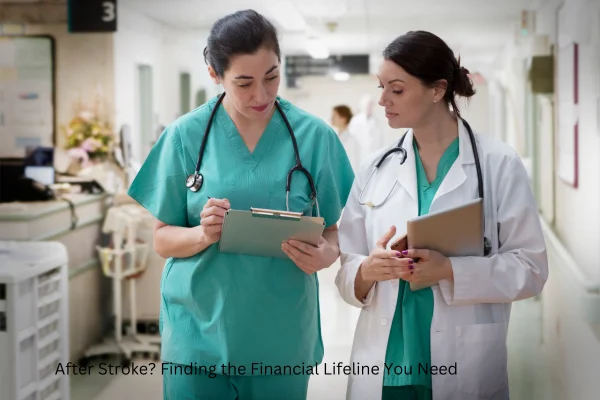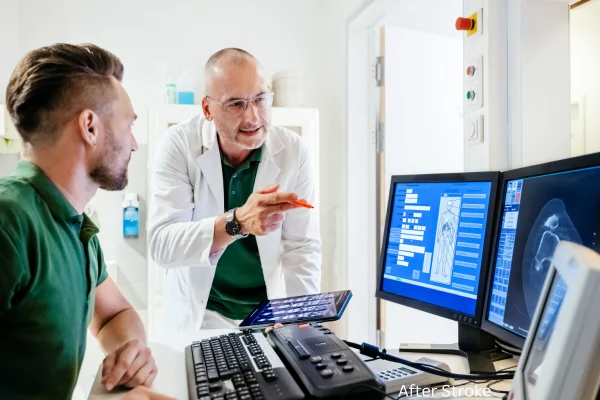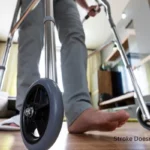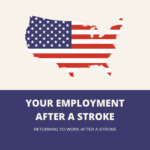Life After Stroke? Explore Financial Resources to Ease Your Path
Life after it can feel like walking through fog. One moment everything moves smoothly, and suddenly you’re facing a new world—blurred sight, shaky hands, rising medical costs. Anyone would feel shaken, and financial pressure adds weight to an already tough journey. Still, you’re not alone—many caring voices and hands stand ready to guide you forward.
Expenses
| Category | Cost |
| In-patient rehabilitation facility | $5,000-$10,000 per week |
| Skilled nursing facility | $3,000-$5,000 per month |
| Home health care | $20-$50 per hour |
| Outpatient therapy | $100-$200 per session |
| Medications | Varies |
| Medical equipment | Varies |
| Lost wages | Varies |
Consider this a roadmap for discovering resources and options that make navigating challenges more manageable.
Let’s navigate this together, step-by-step:
Step 1: Mapping Your Landscape – Government Assistance Programs
First off, let’s take a closer look at what’s already available to you through government-run options that offer financial relief for folks navigating life after one.
| Program | Eligibility |
| Social Security Disability Insurance (SSDI) | Had a job long enough and contributed to Social Security through regular payroll deductions. |
| Supplemental Security Income (SSI) | Tight budget and few means to get by. |
| Medicare | 65 years old or meet certain long-term medical conditions. |
| Medicaid | Limited income and resources. |
| State Vocational Rehabilitation Services | Living with a condition that makes it tough to earn a living. |
| Temporary Assistance for Needy Families (TANF) | Have children and meet income and resource limits. |
| Food Stamps | Meet income and resource limits. |
| Low-Income Home Energy Assistance Program (LIHEAP) | Have limited income and resources. |
Social Security Disability Insurance (SSDI): If an episode has kept you from working for a year or more, SSDI may be available. Monthly payments can help cover essential living expenses, such as utilities and groceries.
Supplemental Security Income (SSI): SSI offers monthly aid for folks dealing with tight budgets and tough circumstances. To figure out if you’re eligible, they’ll review your earnings and anything you’ve managed to save or own.
Medicare and Medicaid: These government-backed programs can reduce financial strain related to medical expenses. Medicare generally covers costs tied to hospital stays and specific follow-up procedures, while Medicaid can assist with long-term living arrangements or extended treatment for those who qualify.
Navigating these options can feel like wandering through a maze, so it’s perfectly okay to ask questions. Try contacting your local Social Security Administration office or the Area Agency on Aging—they’re there to point you in the right direction.
Step 2: Unearthing Hidden Gems – Stroke-Specific Programs
Beyond general government programs, certain resources focus specifically on survivors:
Survivors Connect Initiative: This network unites individuals who have experienced similar events, providing guidance, encouragement, and access to practical relief options for stroke survivors and their families.
Relief Fund Choice: This program offers grants to those affected, helping offset unexpected medical expenses and additional costs that often arise during recovery.
Family Stroke Network: This organization provides financial assistance grants, educational resources, and emotional support to families impacted by it.
Just remember, each choice has its own set of rules about who can qualify and how to get started. To learn more, visit their official sites or give them a call directly.

Step 3: Turning to Your Community – Local Assistance and Charities
Never underestimate what your local community can do. Plenty of local groups and organizations are out there ready to step in—offering rides, groceries, or even covering some bills for folks going through tough times.
Community action squads: These teams are often on standby to help out with grub, bills, and a roof over your head.
Faith groups: Plenty of churches and other spiritual communities often step up with guidance and a generous hand when one of their own is going through a tough stretch.
Local charities: Keep an eye out for charities right in your backyard that are all about helping survivors. They might offer grants, rides, or even a hand with fixing up your home.
Getting in touch with local groups might feel overwhelming at first, but these folks are often ready to step in. A good place to begin is with your local United Way, or by doing a quick online search to find nearby groups offering what you need.
Step 4: Tapping into Employment Resources – Getting Back to Work
While returning to a steady routine is the goal, it’s completely normal to feel uncertain about managing everything independently. Fortunately, multiple resources exist to make transitioning back into daily life smoother after an experience like this:
State-run job rehab: Programs help identify personal strengths, create tailored training plans, and connect individuals with roles suited to their skills and limitations.
Ticket to Work option: Designed for Social Security recipients, this program allows a gradual return to earning income without losing essential financial benefits.
Disability advocacy groups: These organizations provide guidance and support for exploring job opportunities and addressing potential discrimination.
Take time—resuming normal routines doesn’t need to happen all at once. Focus on recovery first, and explore available options when ready.
Step 5: Managing Your Debt – Practical Tips for Steady Ground
Financial setbacks can feel overwhelming, but steps exist to regain stability:
Contact creditors directly: Explain your situation and ask if payment pauses or flexibility are possible.
Revamp your budget: Prioritize essentials and identify areas to reduce spending.
Consider debt counseling: Non-profit credit counseling organizations can create repayment plans and negotiate with creditors on your behalf.
Managing debt can feel like struggling in quicksand as bills pile up, but solutions are available. Even small actions, like adjusting a budget or speaking with a credit professional, can make a meaningful difference.
Remember, recovery spans many areas—finances are just one piece of a larger picture. Seeking guidance isn’t a weakness; it’s a sign of resilience. Use available resources, connect with your community, and focus on next steps. Gradually, life can be rebuilt stronger and more secure than before.

What can I do for income after a stroke?
Dealing with income concerns is a common challenge, but there are avenues to explore:
Temporary Leave Pay: If you’re out for a while, see if your employer has a setup that covers part of your paycheck while you’re getting back on your feet.
Social Security Disability Insurance (SSDI): If your condition has kept you from earning an income for an extended period, SSDI might offer monthly payments to ease the financial pressure. It’s a federally funded setup designed for those facing long-term challenges that prevent them from returning to their usual routine.
Supplemental Security Income (SSI): SSI is a federal benefit designed for individuals with limited income and personal assets. It offers monthly payments to make sure essentials like groceries and housing are within reach.
Check out job readiness services: Such programs focus on guiding individuals through skills training, planning, and job placement options suited to current abilities. Aim is to ease transition back into earning income by matching people with opportunities aligned with strengths and comfort level.
Look into Flexible Roles or Shorter Hours: Depending on what you’re comfortable handling, you might want to explore jobs that let you stay home or take on fewer hours. Plenty of companies these days are open to flexible arrangements that match your pace.
Take a Look at Company Rules: See if your employer offers any adjustments or lighter duties. Some places have guidelines that make it easier for folks to come back after going through something major.
Talk to a Trusted Money Expert: Sit down with someone who understands money matters. They can walk you through organizing what you owe, figuring out what’s essential, and making smarter choices moving forward.
| Option | Description |
| Disability Benefits | – Social Security Disability Insurance (SSDI) – Supplemental Security Income (SSI) |
| Vocational Rehabilitation: | – Supported employment programs – Job training and placement assistance |
| Remote Work | – Online freelancing and consulting – Customer service and virtual assistant roles |
| Self-Employment | – Online businesses (e.g., Etsy, blogging) – Home-based businesses (e.g., crafts, childcare) |
| Part-Time Work | – Flexible hours and reduced workload |
| Government Assistance | – Temporary Assistance for Needy Families (TANF) – Food stamps and other programs |
| Personal Injury Lawsuit | – Compensation for medical expenses and lost wages |
What benefits are there for the victims?
If you or someone close has faced this life-changing event, navigating next steps can feel overwhelming. Across the U.S., multiple resources exist to guide those affected:
Rehabilitation Services: A variety of programs focus on individual needs, including physical therapy to restore movement, occupational therapy to improve daily living skills, and speech therapy to address communication challenges.
Coverage Through U.S. Insurance Plans: Many insurance policies cover costs associated with recovery, such as hospital stays, specialist sessions, and follow-up appointments. Reviewing your policy carefully ensures maximum benefit.
Social Security Benefits: Some may qualify for monthly support through Social Security. SSDI provides coverage for those with long-term limitations that prevent returning to usual daily duties, particularly after this type of medical event.
Medicare and Medicaid: Individuals 65 and older can rely on Medicare to cover recovery-related expenses. Medicaid assists low-income individuals, often covering services beyond Medicare’s scope.
Assistive Devices and Home Modifications: Programs and grants can help obtain wheelchairs, communication aids, and make home modifications to improve accessibility.
Talking Circles and Guidance Services: Emotional stability is vital after major life events. Many in-person and virtual groups allow survivors and their loved ones to connect, share experiences, and find encouragement.
Tax Breaks and Credits: Certain expenses—like medical visits or home modifications (ramps, wider doorways)—may qualify for deductions or credits. Consulting a tax professional can clarify what applies to your situation.
If you want, I can also condense all these benefits into a clear, quick-reference guide for survivors and their families. Do you want me to do that?
| Benefit | Description |
| Improved physical function | This includes regaining strength, coordination, and balance, which can help victims perform daily activities more independently. |
| Reduced disability | Rehabilitation can lessen long-term disability, enabling individuals to regain independence and lead more fulfilling lives. |
| Enhanced cognitive function | Some victims experience cognitive impairments such as memory loss or difficulty speaking. Rehabilitation can help improve these cognitive abilities. |
| Reduced emotional distress | Experiencing such an event can be deeply traumatic, and rehabilitation can play a key role in managing emotional effects while boosting overall wellness. |
| Lower healthcare costs | Skilled rehabilitation can reduce risk of setbacks and lessen chances of needing ongoing care, ultimately easing long-term expenses. Can compensation be claimed? |




